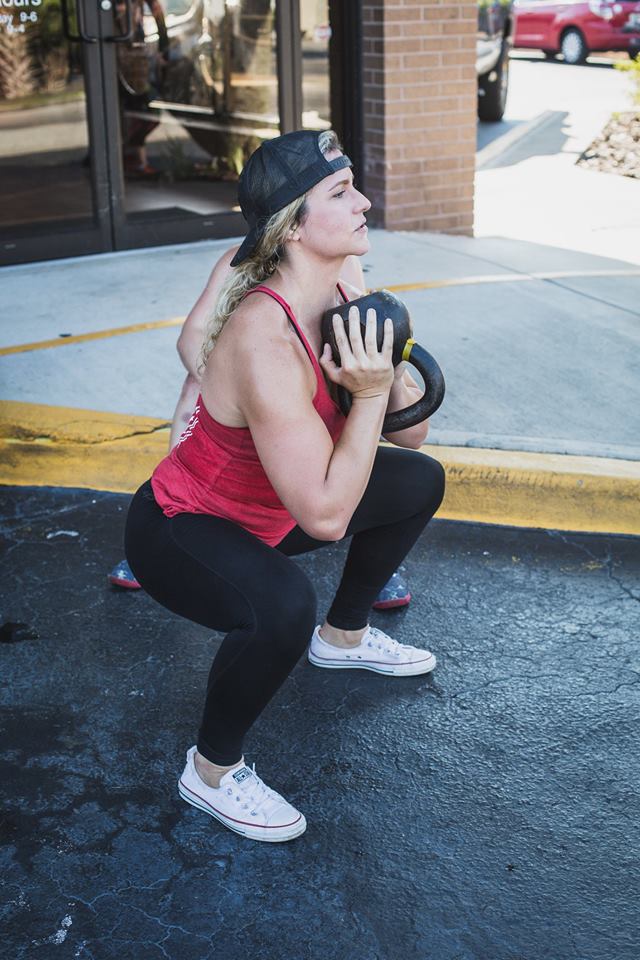News
News
- Posted On
- June 25, 2019
- In News, Thought Leadership
- by Iron Legion
Head Coach Jason Philyaw shares insight on why lifters often stall their progress by prioritizing speed over technique in Olympic lifts. Discover why a slower, more controlled approach builds better results—and how to shift your mindset from brute strength to precision and consistency in weightlifting.
- Posted On
- June 13, 2019
- In News, Thought Leadership
- by Iron Legion
Motivation isn’t just about having it—it’s about understanding how you’re motivated. Coach Dave breaks down the path from external to intrinsic motivation using relatable stories and explains how that journey can transform your fitness, mindset, and life.
- Posted On
- June 10, 2019
- In News, Thought Leadership
- by Iron Legion
Preparing for birth is like training for a marathon—it takes intention, consistency, and a smart plan. Isabelle Ramirez, BirthFit coach at Iron Legion in Ocala, shares how training (not just staying active) helped her have strong, symptom-free pregnancies, and how other women can feel empowered and ready for their own journey into motherhood.
- Posted On
- May 22, 2019
- In News, Thought Leadership
- by Iron Legion
What is the dreaded “butt wink” in squatting, and should you worry about it? Coach Jason from Iron Legion breaks down this common movement flaw, why it matters (especially for weightlifters), and how to assess, address, or adapt based on the lifter’s structure, mobility, and training goals.
- Posted On
- May 17, 2019
- In News, Thought Leadership
- by Iron Legion
At Iron Legion, we’re building a new strength culture—one where strong moms lead the way. From training through pregnancy to returning post-birth with purpose, our community sets the example for future generations through grit, growth, and relentless dedication.
- Posted On
- May 13, 2019
- In News, Thought Leadership
- by Iron Legion
Speed and strength aren’t built on maxing out every week. Learn how overloading too often or skipping technical refinement can stall your Olympic lifts—and what to do instead. Coach Jason shares insight on improving performance through balance, movement integrity, and smart coaching at Iron Legion.
- Posted On
- May 8, 2019
- In News, Thought Leadership
- by Iron Legion
Stimulants like cocaine and intense exercise are a dangerous mix—potentially leading to serious conditions like Rhabdo. Coach Jason Philyaw shares a real-life story and important advice about transparency, supplement safety, and why athletes must be honest about what they’re taking.
- Posted On
- May 6, 2019
- In News, Thought Leadership
- by Iron Legion
Not every workout needs to be full throttle. Learn when and how to scale your volume and intensity in CrossFit for better progress, reduced injury risk, and long-term success. Coach Jason shares practical strategies and examples for smart training.
- Posted On
- April 29, 2019
- In News, Thought Leadership
- by Iron Legion
Learn why soreness (DOMS) is a normal part of your fitness journey and how to properly recover to avoid burnout or injury. Coach Alex Ford shares Iron Legion’s best strategies for balancing training and rest for long-term performance and progress.
- Posted On
- April 23, 2019
- In News, Nutrition, Thought Leadership
- by Iron Legion
Learn what sugar really is, the difference between natural and added sugars, and how too much can impact your health—from weight gain and diabetes to joint pain and fatigue. Discover practical tips to reduce sugar in your diet and create healthier habits for you and your family.
















